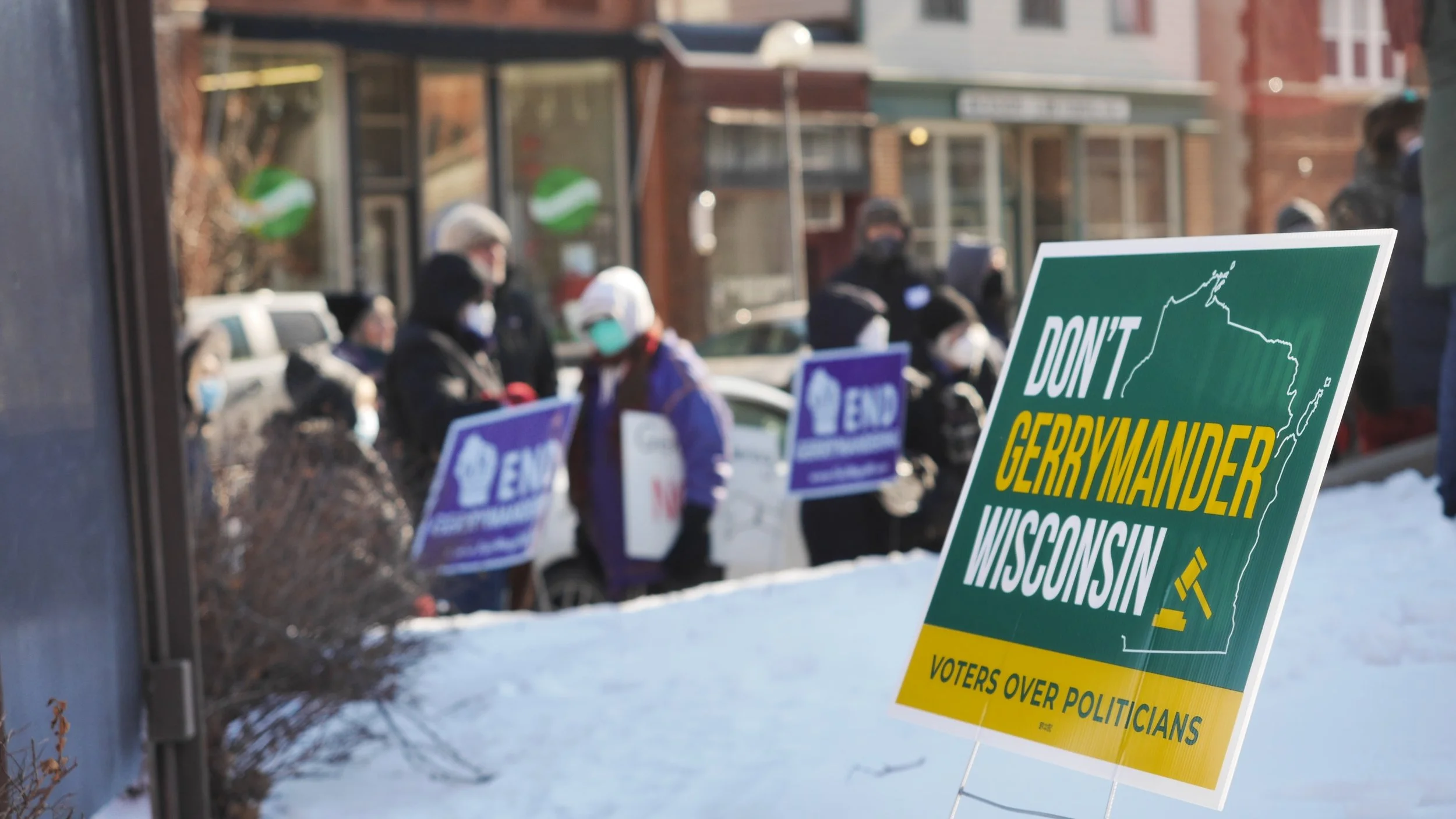Gerrymandering and Wisconsin’s Maps
Gerrymandering: a political party in power redraws the boundaries of voting districts in crafty ways to give their party a further advantage.
It rigs the political game in favor of one-party rule, decreases competition, and muffles the voices of those who are in the minority. It deprives Wisconsinites of equal representation. And it leads to hyper-partisanship.
What happened to maps in Wisconsin?
1971: Bipartisan and fair map were drawn by the legislature. This is the last time there has been bipartisan collaboration in redistricting.
1981, 1991, 2001: After partisan gridlock, federal courts drew congressional and legislative district maps.
2009: Democrats had majorities in the State Senate and Assembly and held the Governor’s seat. Nonpartisan redistricting legislation was proposed. They took a pass expecting to maintain the ‘trifecta’ in 2010 and being in charge of the redistricting process. They were wrong. Instead, Republicans swept the 2010 elections by narrow margins.
2011: Using new technology and algorithms, as well as high-priced, taxpayer-funded lawyers, Wisconsin Republicans in the legislature drew the most gerrymandered map in the United States in secret. In fact, they required members of their own party to sign confidentiality agreements before allowing them to see the maps.
In subsequent elections, winners of statewide elections in Wisconsin for President, Governor, US Senate, Attorney General and other seats shifted between the two major political. Even with large statewide Democratic margins in elections since, Republicans maintained dominant control of the State Assembly. Our legislature should look like our state, but with rigged maps, it simply doesn’t. Since the 2011 redistricting, election results of most state legislative districts was decided before any votes were cast.
In fact, the 2011 maps were specifically designed to take away power from communities of color, especially those in the Milwaukee area. Some argue that Wisconsin’s geography explains these unfair outcomes, but this does not explain the dramatic shift of outcomes from before 2011 and after. We will no longer accept dishonest excuses not to pass fair maps.
What’s been done since 2011?
For more than 10 years, Wisconsin residents from across the state voiced their frustration with the anti-democratic maps.
Since 2013, 56 counties and 5 municipalities in 3 other counties have passed board resolutions, and 32 counties and 21 municipalities in 5 other counties have passed countywide referendums by overwhelming margins calling on state legislators to pass legislation creating a nonpartisan redistricting process.
From 2009 to 2022, twenty-one bills or resolutions were introduced to reform redistricting in Wisconsin. NONE of these proposals received an up-or-down vote on the floor of the state legislature.
You can find them here: https://www.fairmapswi.com/bills-resolutions-20092022
2020: Governor Tony Evers established the People’s Maps Commission: an open and transparent redistricting process for fair maps. Nine commissioners were chosen by a panel of retired circuit court judges.
From October 2020 to September 2021, this nonpartisan commission held public hearings, gathered maps from Wisconsinites, and worked with mapping experts in open meetings, ensuring a fair and transparent redistricting process.
2021 and 2022: Fair maps activists held rallies, wrote letters, hosted educational events & forums, attended hearings, submitted community of interest maps to the PMC and State Legislature, and met with their legislators to advocate for a better redistricting process throughout 2021 & 2022.
Maps were submitted to the State Legislature from the Governor and GOP Leadership. Hundreds traveled to the Wisconsin State Capitol to testify against the Legislature’s proposed maps. Only two legislators testified in favor, the GOP leaders of the State Assembly and Senate. Despite overwhelming opposition from constituents, the GOP-created maps were passed along party lines.
The Governor vetoed them.
Suits were filed as soon as census numbers were released in August 2021. And the court battle began in earnest following the Governor’s veto and continued for months, traveling back and forth between the Wisconsin Supreme Court and the US Supreme Court.
Ultimately, the Wisconsin Supreme Court chose to impose the legislature’s extremely-gerrymandered maps for the 2022 election cycle.
On April 18, 2022, the Wisconsin Fair Maps Coalition hosted a briefing on the new state voting maps and the next steps forward in Wisconsin fight for fair election maps.
Just one year later on April 4, 2023, a pro-democracy Wisconsin Supreme Court Justice was elected raising hopes that the current rigged voting district maps will be thrown out and new, fairer maps will be implemented.
On August 2, 2023, Law Forward and co-counsel from Campaign Legal Center, Harvard Election Law Clinic, Stafford Rosenbaum, and Arnold & Porter, filed a petition with the Wisconsin Supreme Court asking the justices to declare the state legislative maps unconstitutional with five claims - three related to partisan gerrymandering, one related to non-contiguity, and one related to separation of powers among the three branches of state government.
On October 6, 2023, the Wisconsin Supreme Court agreed to hear the case on two of those claims - non- contiguity and separation of powers - and set out a timeline for the case. Read more here: https://www.fairmapswi.com/2023-maps-in-court



